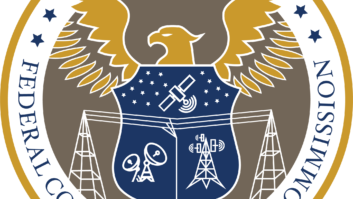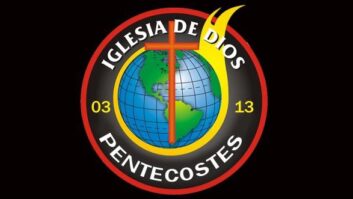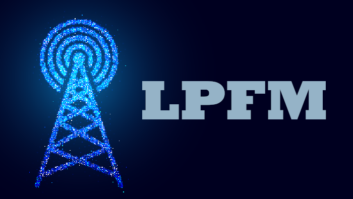LPFM Window on the Horizon
Apr 1, 2013 7:00 AM, By Lee Petro
The FCC is moving swiftly to clear out and grant the FM translators that will not preclude future low-power FM (LPFM) stations. While many were skeptical the FCC would meet its aspirational goal of having an LPFM window by Oct. 15, it is likely this might be more than a pipedream. Since LPFM stations must comply with certain eligibility criteria to receive a construction permit, there is no time like now for these applicants to get their paperwork in order.
Eligibility. Only nonprofit educational organizations and tribal applicants who show that the proposed station will be used for the advancement of a non-commercial, educational program will be eligible to obtain an LPFM license. An applicant must be local in order to submit an application, and must certify that it will continue to remain local in the event it receives a license.
The FCC defines local in two different ways, depending upon the size of the community. For those communities within the top 50 urban markets in the U.S., an applicant is considered local if: the applicant’s local chapter or branch is headquartered or has a campus within 10 miles of the site of the proposed transmitting antenna; or 75 percent of the applicant’s board members reside within 10 miles of the proposed antenna site.
For communities outside of the top 50 urban markets, an applicant is considered local if: the applicant’s local chapter or branch is headquartered or has a campus within 20 miles of the site of the proposed transmitting antenna; or 75 percent of the applicant’s board members reside within 20 miles of the proposed antenna site.
Ownership Limits. The FCC’s rules prohibit attributable interests in more than one LPFM station. However, to create incentives for tribal entities to obtain LPFM licenses, the FCC will permit a tribal applicant to file for two LPFM facilities. In addition, eligible applicants that propose public safety purposes for the service will be permitted to file two applications, but one will need to be identified as the priority application, and the other application may not be mutually-exclusive with any another LPFM application.
Point System Determinations. Assuming that more than one application is filed for the same geographic area, the Commission developed a point system to compare the mutually exclusive applicants. The FCC will grant one point for each of the following criteria it meets. The applicant with the highest point total becomes the tentative selectee to receive the LPFM license.
(1) Established Community Presence. An applicant must submit documentation with its application to verify that, for a period of two years prior to filing an application it qualified as a local applicant, as described above.
(2) Local Program Origination. An applicant must pledge to originate locally produced programming at least eight hours a day. Local origination is the production of programming, by the licensee, within 10 miles of the proposed transmitting antenna.
(3) Main Studio. An applicant must certify that it will maintain a main studio with program production capability, and have a staff at least 20 hours per week between 7 a.m. and 10 p.m., within 10 miles of the transmitter site for top 50 markets, and within 20 miles for markets outside the top 50.
(4) Bonus Point. An applicant demonstrating that it is entitled to local program origination and main studio credit receives an additional point for making both certifications.
(5) Diversity of Ownership. An applicant having no attributable interest in any other broadcast station.
(6) Tribal Applicants Serving Tribal Lands. An eligible tribal applicant, certifying service to a defined-tribal land.
Tie Break. Two or more tied applicants may submit a time-sharing proposal. If a proposal includes all of the tied applications, all of the tied applicants will be treated as tentative selectees. Otherwise, the FCC will aggregate the points of time-share proponents to determine the tentative selectees. If applicants do not resolve a tie through voluntary time-sharing, the FCC awards each tied and grantable applicant an equal, concurrent, and non-renewable license terms.
As noted above, the FCC is swiftly moving through the FM translator backlog. Since there hasn’t been an LPFM window for more than 10 years, it is likely that there will be a large number of applications filed during the window. To ensure that applicants aren’t dismissed for solvable problems, now is the time to prepare.
FCC Dateline

Stations in Texas run License Renewal Post-Filing Announcements on April 16, May 1 and 16.
Stations in Arizona, Idaho, Nevada, New Mexico, Utah, and Wyoming run License Renewal Pre-Filing Announcements on April 16, May 1 and 16.
April 10: Stations place Issues/Programs Lists for 1Q2013 in public inspection file.
Petro is of counsel at Drinker Biddle & Reath, LLP. Email: [email protected].
April 2013
Remote access, inside Emmis Terre Haute, Field Reports on the Rode Reporter and Belar FMCS-1, working with Corian and more products at the 2013 NAB Show….










